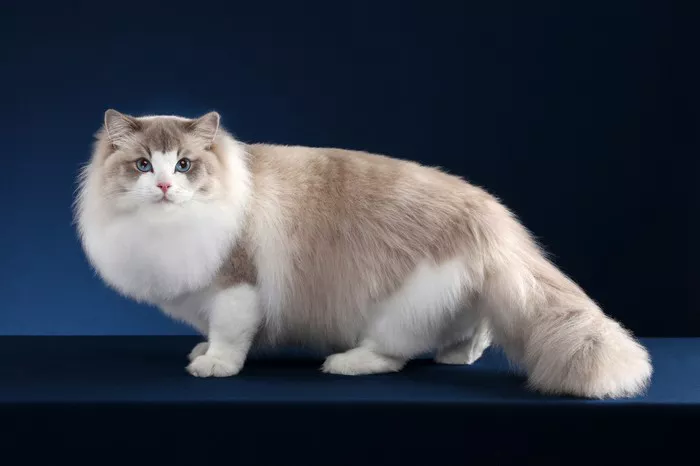Ragdoll cats are beloved for their gentle temperament, striking blue eyes, and luxurious, semi-long fur. However, like all cats, Ragdolls shed their fur regularly as part of the natural grooming process. While shedding is a normal and healthy occurrence, excessive shedding can be a source of frustration for cat owners, leading to a buildup of fur around the home and potential allergic reactions in sensitive individuals. In this article, we explore effective strategies to manage and minimize shedding in Ragdoll cats, helping to keep their coats healthy and your home fur-free.
1. Understand the Shedding Cycle
Before delving into specific strategies for managing shedding, it is essential to understand the natural shedding cycle of Ragdoll cats. Like all mammals, cats shed their fur as part of the hair growth cycle, which consists of three phases: anagen (growth phase), catagen (transitional phase), and telogen (resting phase). Shedding typically occurs during the telogen phase when old hair is released to make way for new growth. While shedding is influenced by factors such as season, temperature, and hormonal changes, Ragdolls, like many other cat breeds, shed year-round with increased shedding occurring during the spring and fall.
2. Regular Grooming
One of the most effective ways to minimize shedding in Ragdoll cats is through regular grooming. Regular brushing helps remove loose fur, dirt, and debris from the coat, preventing it from accumulating on furniture, clothing, and carpets. For Ragdolls, which have a dense, semi-long fur coat, a combination of a slicker brush and a stainless steel comb is recommended. Begin by gently brushing your cat’s fur in the direction of growth, paying particular attention to areas prone to matting, such as the chest, belly, and behind the ears. Be sure to use a light touch to avoid causing discomfort or skin irritation.
3. Use High-Quality Cat Food
A balanced and nutritious diet plays a crucial role in maintaining your Ragdoll’s overall health and coat condition. High-quality cat food formulated with essential nutrients such as protein, omega-3 and omega-6 fatty acids, vitamins, and minerals can help support healthy skin and coat. Look for cat foods specifically formulated for skin and coat health, and avoid products with fillers, artificial additives, or low-quality ingredients. Consult with your veterinarian to determine the best diet for your Ragdoll based on their age, activity level, and any specific dietary requirements or sensitivities.
4. Provide Adequate Hydration
Proper hydration is essential for maintaining healthy skin and coat in Ragdoll cats. Ensure that your cat has access to fresh, clean water at all times, and consider incorporating wet or canned cat food into their diet to help increase moisture intake. Dehydration can lead to dry, flaky skin and a dull, lackluster coat, exacerbating shedding and potentially causing discomfort for your cat. Additionally, consider investing in a cat fountain or providing multiple water sources throughout your home to encourage regular hydration.
5. Address Underlying Health Issues
Excessive shedding in Ragdoll cats may sometimes be indicative of underlying health issues or medical conditions. Skin allergies, parasites such as fleas or mites, hormonal imbalances, and thyroid disorders can all contribute to increased shedding and coat abnormalities. If you notice a sudden or significant increase in shedding, along with other symptoms such as skin irritation, hair loss, or changes in behavior, it is essential to consult with your veterinarian promptly. A thorough physical examination, diagnostic tests, and blood work may be necessary to identify and address any underlying health issues contributing to excessive shedding.
6. Control Environmental Factors
Environmental factors such as dry air, indoor heating, and exposure to sunlight can impact your Ragdoll’s coat condition and shedding patterns. During the winter months, consider using a humidifier to add moisture to the air and prevent dryness, which can lead to skin irritation and increased shedding. Limit your cat’s exposure to direct sunlight, as excessive UV radiation can damage the skin and coat, leading to dryness and brittleness. Additionally, provide your Ragdoll with access to comfortable, shaded areas indoors where they can rest and relax away from direct sunlight.
7. Minimize Stress
Stress and anxiety can exacerbate shedding in Ragdoll cats, as well as contribute to other behavioral and health issues. Create a calm and comfortable environment for your cat by providing plenty of opportunities for mental and physical stimulation, such as interactive toys, scratching posts, and cozy hiding spots. Establish a routine for feeding, playtime, and grooming to provide structure and predictability for your cat, helping to reduce stress and promote a sense of security. If your Ragdoll exhibits signs of stress or anxiety, such as excessive grooming, hiding, or vocalizing, consult with your veterinarian or a feline behavior specialist for guidance on how to address underlying issues and create a supportive environment for your cat.
8. Schedule Regular Veterinary Check-ups
Regular veterinary check-ups are essential for monitoring your Ragdoll’s overall health and addressing any potential concerns related to shedding or coat condition. Your veterinarian can provide valuable insights and recommendations for managing shedding based on your cat’s individual needs and health status. During routine exams, your veterinarian can also check for signs of skin irritation, parasites, or underlying health issues that may be contributing to excessive shedding. By staying proactive about your Ragdoll’s health and well-being, you can help ensure that they maintain a healthy, glossy coat and enjoy a happy, comfortable life.
Conclusion
While shedding is a normal and unavoidable aspect of cat ownership, there are several strategies you can employ to minimize shedding in your Ragdoll cat and keep their coat looking healthy and beautiful. By incorporating regular grooming, providing a balanced diet, addressing underlying health issues, and creating a stress-free environment, you can help reduce shedding and ensure that your Ragdoll remains happy, comfortable, and well-groomed for years to come. With patience, consistency, and proper care, you can keep your Ragdoll’s shedding under control and enjoy a harmonious relationship with your feline companion.
























